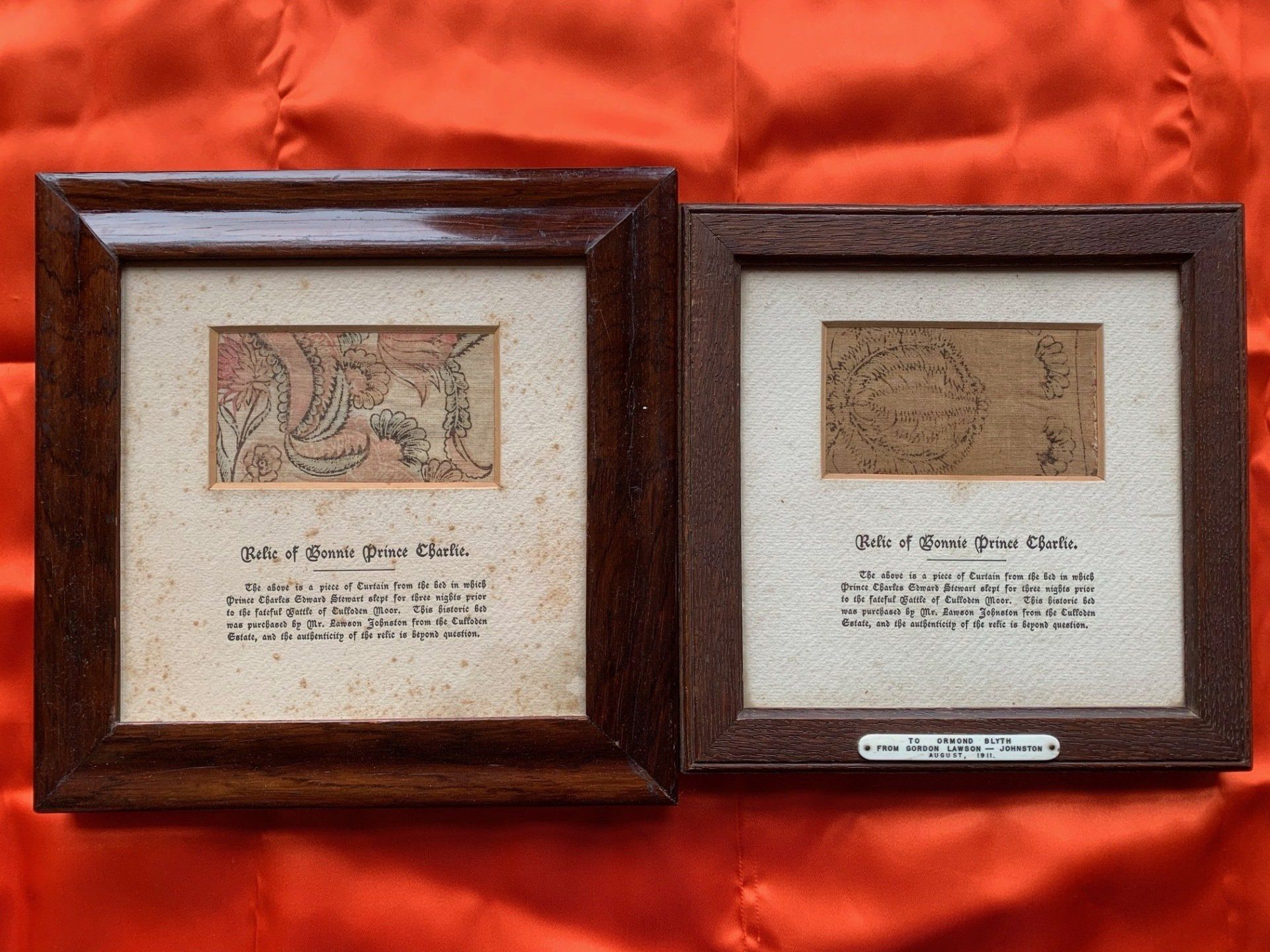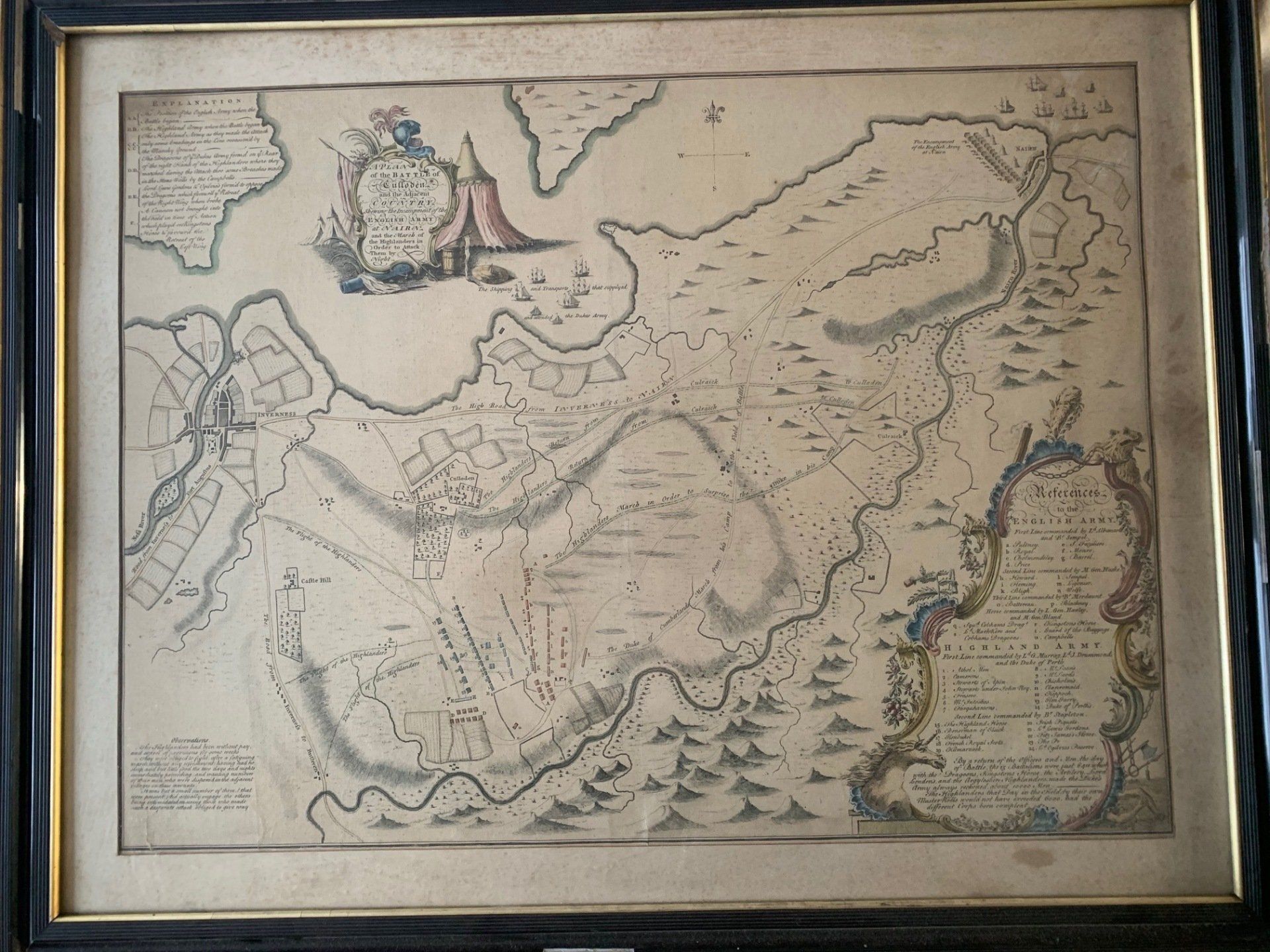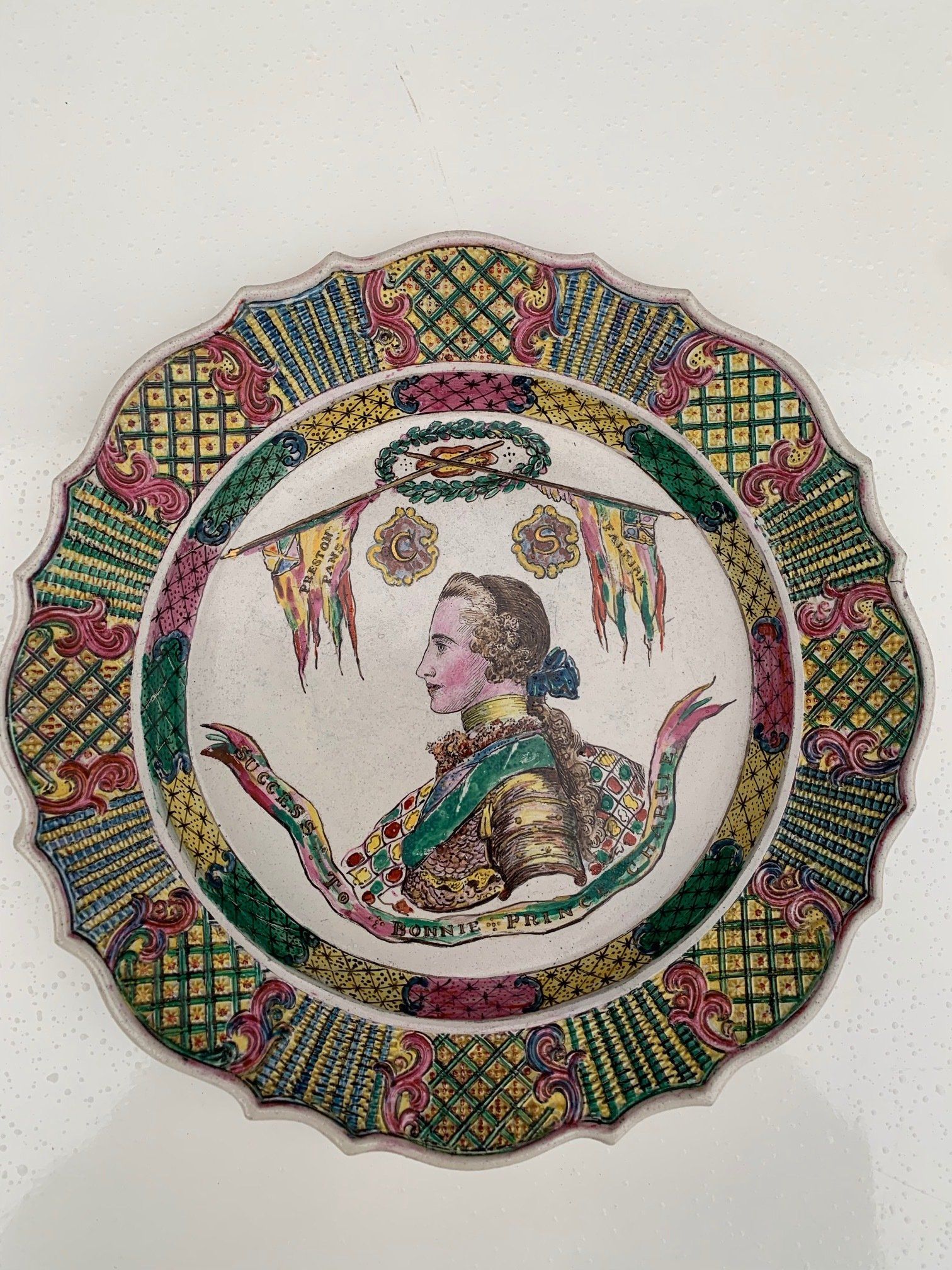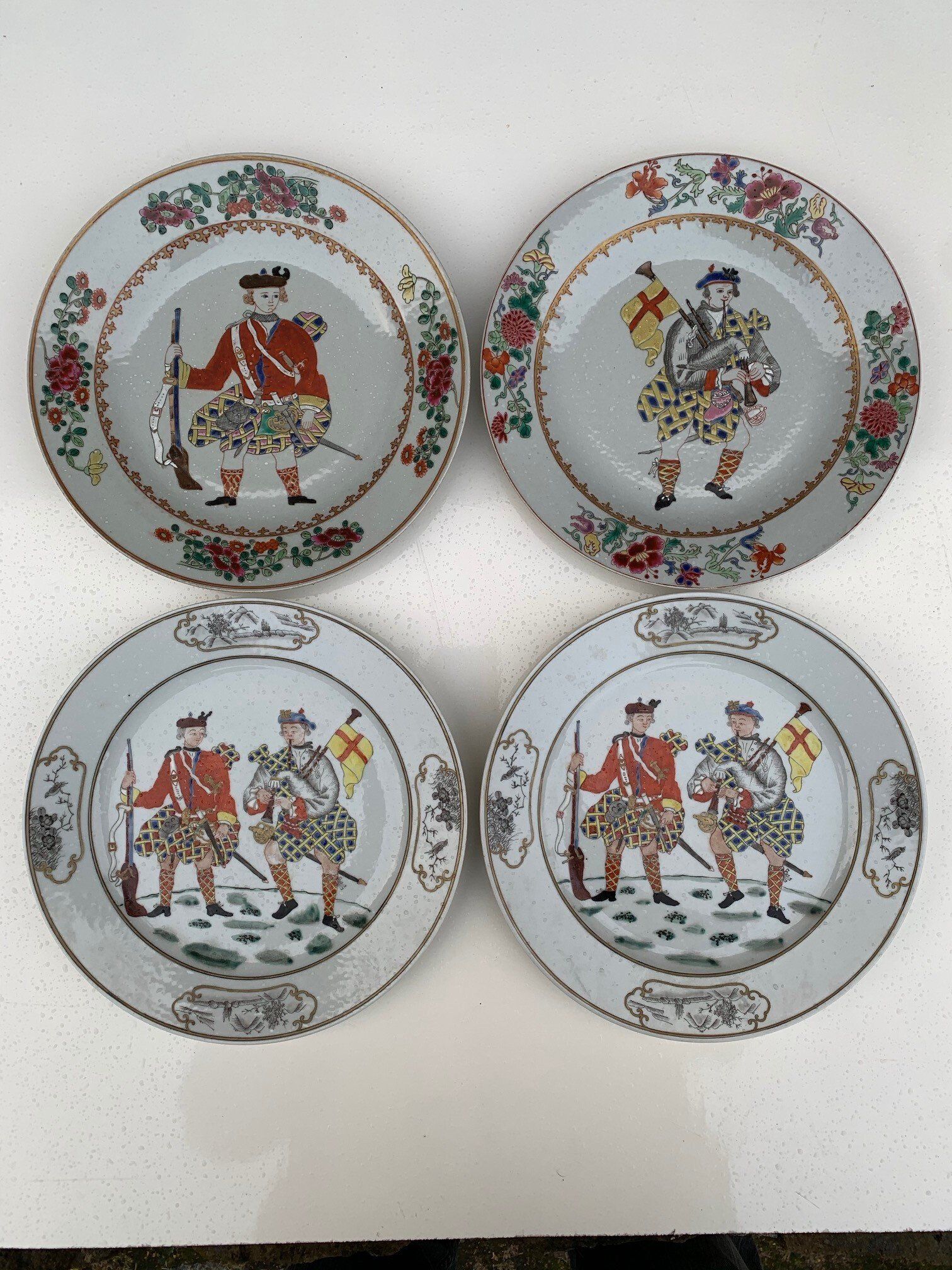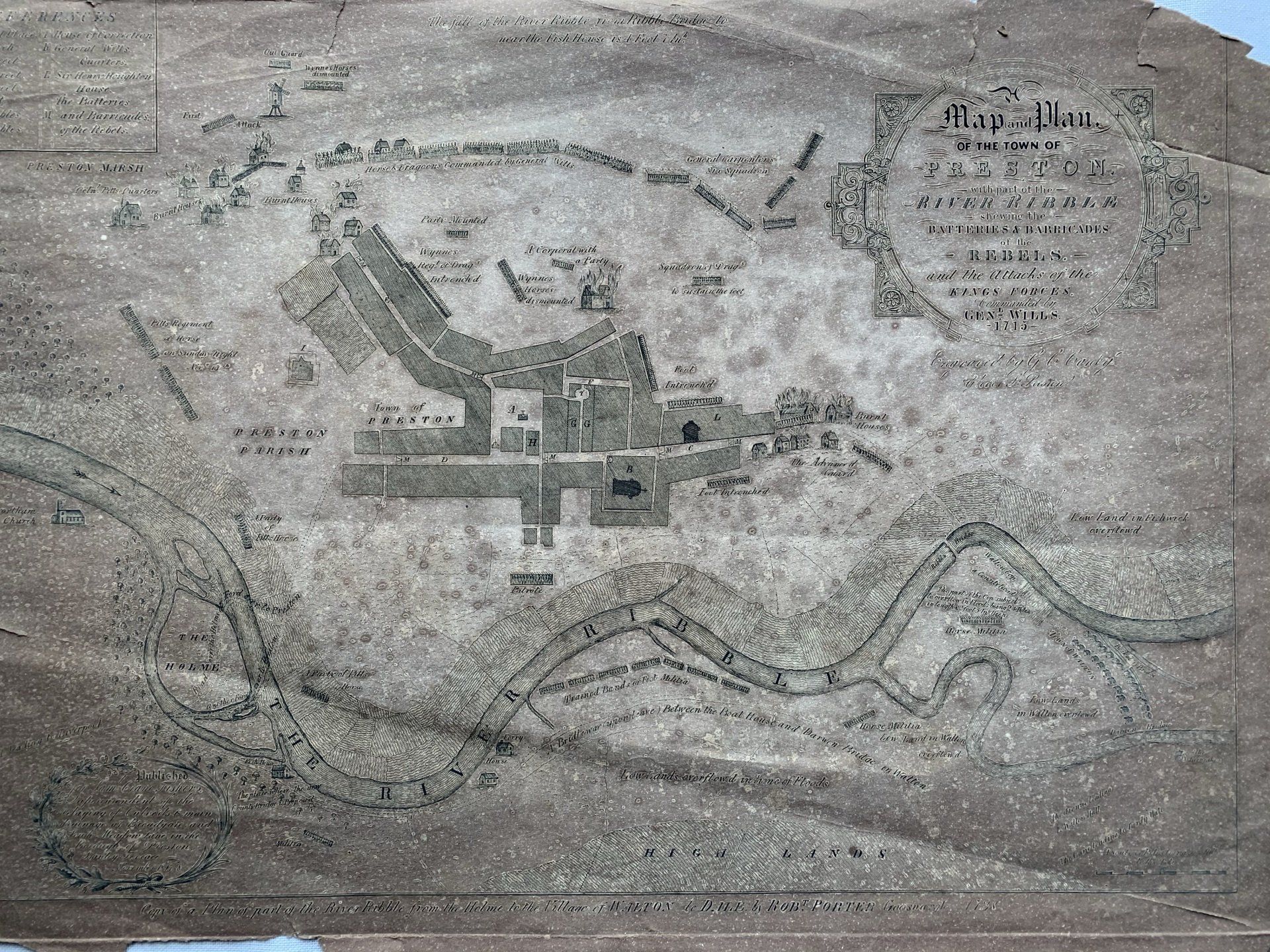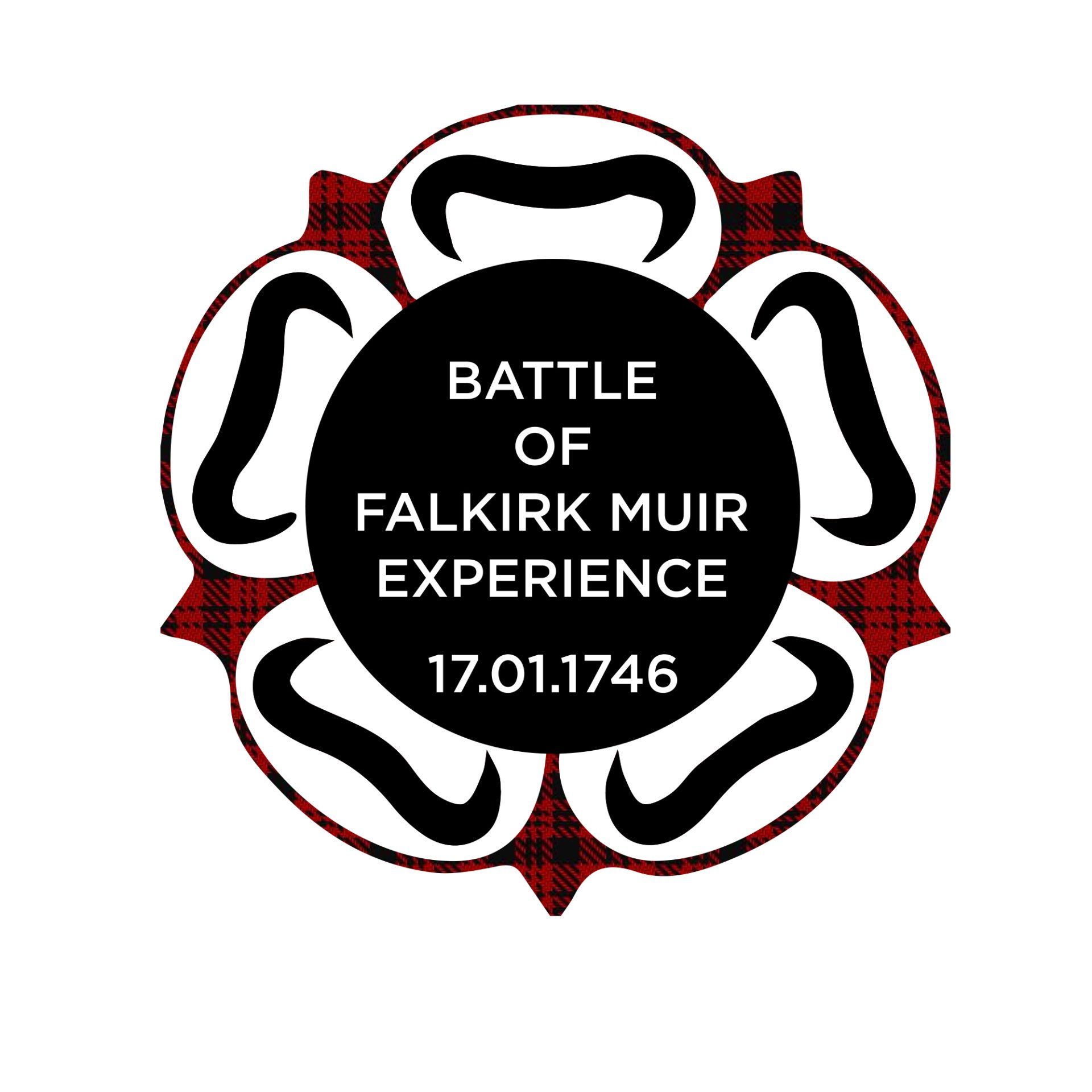Room 5 - Miscellaneous Gallery
Curtains
After the Jacobite army returned from the failed night march to Nairn when they planned to launch a surprise attack on the British army Prince Charles returned to his quarters at Culloden House.
The bed he slept in and the rest of the contents of Culloden House were sold by auction in 1897. The bed and it's hangings were lot 605. The purchaser's catalogue of the sale states that it was sold for £750 to J Lawson Johnstone, London.
The bed was sent to America. Pieces of the bed hangings were cut up, framed and sold. Two pieces are shown here. The one on the right has a small plaque stating it was given to Ormond Blyth by Gordon Lawson Johnstone in August 1911.
Added 30 April 2021
Culloden Map
This image is a contemporary engraving that shows where Cumberland's army camped at Nairn the night before the battle. It also shows the route the Jacobites took on their failed night march to launch a surprise attack on Cumberland's forces at their encampment. Finally it shows the position on the battlefield of all the regiments from both sides.
Added 30 April 2021
Battle of Prestonpans
This plan of the Battle of Prestonpans was engraved on 21st December 1745. it is entitled the 'Plan of the Battle at Seton, 21st September 1745. By an officer who was present'. It cost two shillings and six pence which is equivalent to 12.5 pence.
The plan shows the positions of both the British army and the Jacobite forces as the battle started.
Added 23 February 2021
Duke of Cumberland Mugs
These three very rare mugs were produced in China in 1746 for the British market and were bought by the supporters of the Hanoverian regime.
The legend on the mugs read:
'In rememberance of the glorious victory at Culloden 16 April 1746'
Added 13 February 2021
Rebellion Defeated Trial Strike
This medallion was produced by the Hanoverian regime to celebrate the defeat of the Jacobite army at Culloden on 16th April 1746.
It shows a Highlander kneeling in defeat in front of the crowned lion of England. It is dated 1746.
This specimen is a unique example of a trial strike. Trial strikes were taken for all new medallions in order to check that the dies had been properly designed and produced.
Added 13 February 2021
Falkirk Muir Commemorative Plate
This scarce Staffordshire plate was produced some time between the battles of Falkirk Muir fought on 17th January 1746 and Culloden fought three months later.
The plate has a finely enamelled portrait of Prince Charles Edward Stuart in armour wearing Garter sash with a laurel wreath above and inscribed with 'Success to Bonnie Prince Charlie' below.
Depicted at the top of the plate are two pennants, commemorating the battles of Preston Pans and Falkirk.
Added 19 January 2021.
Highlander or Scotsmen Plates
The Black Watch was established in 1739 as the 43rd Highlanders, later the 42nd, to patrol the Highlands. In 1743 the regiment was transferred to London and there were rumours that the men were to be shipped to the West Indies. As a result there was a mutiny. Three of the ringleaders were executed and the piper, Donald Macdonnell was transported to Georgia.
At the time the ringleaders were drawn by George Bickham and a set of four drawings were printed by John Boles. Two of these prints were sent to China and were used for the images on these plates. The plates were produced in 1745 for the Scottish market and they were owned by Jacobite supporters.
Added 19 January 2021.
Cumberland's Map 1745
This map of the 'North of Britain' dated 1745 was surveyed by Elphinstone and dedicated to the Duke of Cumberland.
It was the most detailed and accurate map of it's time and it would have been an invaluable aid for the British Army enabling the Forces to move around the country.
Added 30 December 2020
Battle of Preston
The Battle of Preston was fought over a five day period from 9th November 1715. It was one of the two battles fought during the '15 rising, the other being the Battle of Sheriffmuir.
This map dates from 1735 and shows the areas where the fighting took place.
Added 30 December 2020
Jacobite Encampment 1746
It is difficult to work out from the background scenery where the Jacobite army was camped. However, as the engraving was made in Edinburgh in 1746, it might be a camp sometime prior to the battle of Falkirk Muir.
Added 23 November 2020

